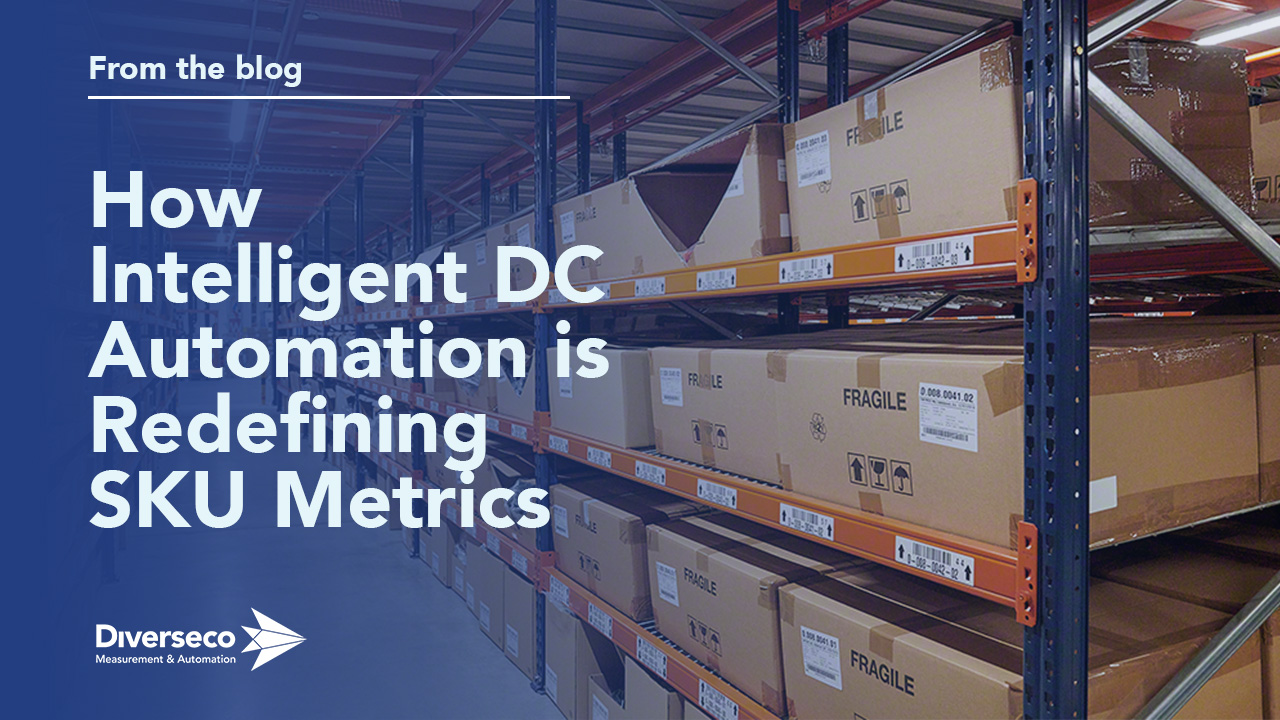
Gone are the days of the simple, humble, Stock Keeping Unit (SKU). In the old days, we thought we were sophisticated if, as supply chain managers, our warehouse management system (WMS) knew the length, width, height, and weight of an SKU. But that is so last year. Get with the automation program, people!
These days, increasingly intelligent automation is redefining SKU metrics. No longer is mere knowledge of an SKU’s L/W/H and W enough to satisfy the capabilities of super-intelligent WMS and Warehouse Control Systems (WCS).
Fuelled by e-commerce growth and the rising demand for just-in-time ordering, warehouses and distribution centres are increasingly changing their order-picking and fulfilment models from traditional person-to-goods methods to modular and automated goods-to-person (GTP) scenarios. Given the ultra competitive and price based nature of e commerce and the influx of operators in Australia like Amazon the drive to reduce costs per unit is unrelenting.
This new GTP approach, for example, minimises wasted time between picks and increases the number of orders each person can process. Instead of sending workers out to retrieve goods, this process automates material handling equipment which brings the goods to the order pickers who remain in a fixed spot.
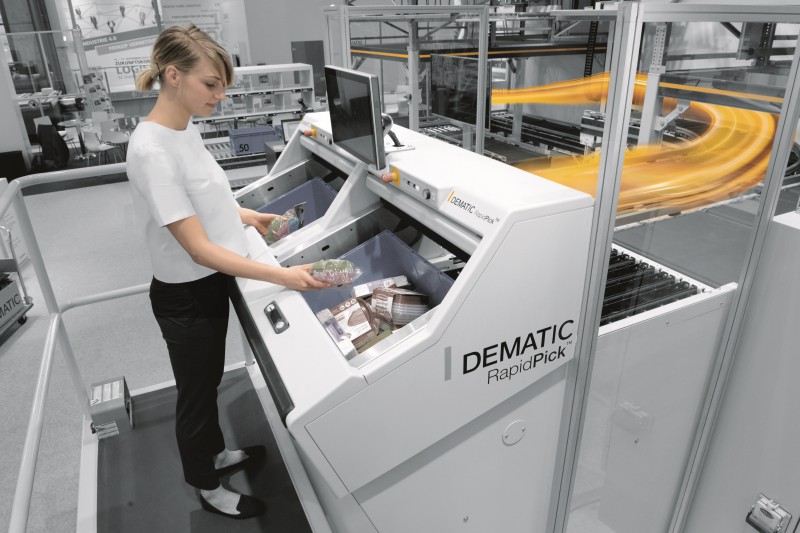
I pick you!
Materials handling suppliers like Dematic, Vanderlande, and more are driving innovation in this area. Logic in Decision automation can now instantly take place at the level of the individual SKU. Slotting optimisation, carton selection optimisation, and packaging on demand from suppliers like Packsize are just three easy examples of how these SKU definitions inform automation decisions.
But guess what? For this innovation to work you must have very precise SKU dimensional measures. That we already know. However, and just as critically, you must ascribe new materials handling characteristics to the SKU. (And you must budget for a new CubiScan in your CapEx!)
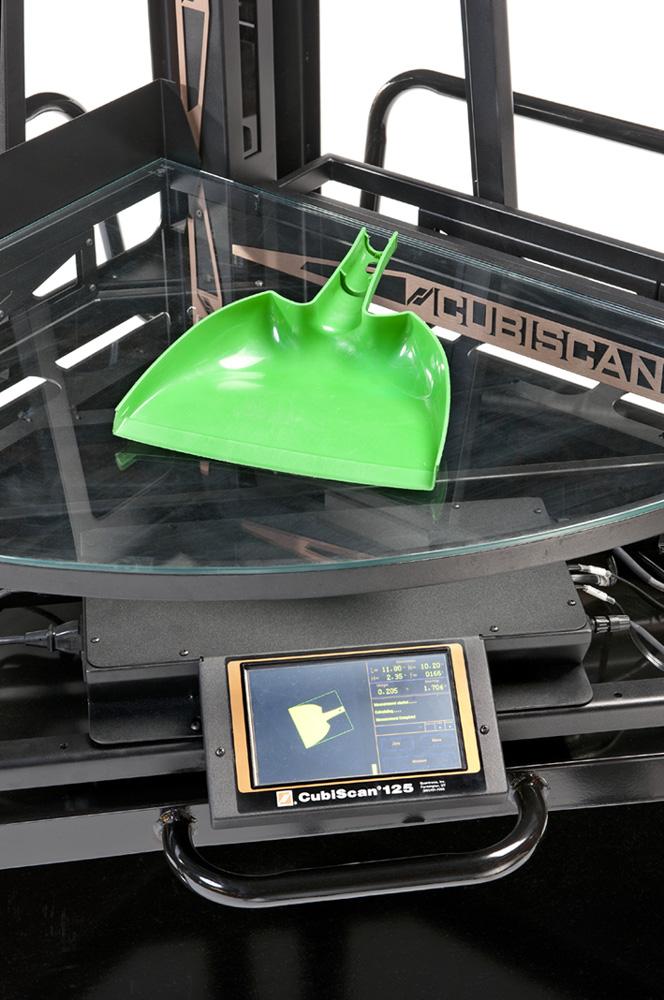
Can you cube a dustpan? Yes you can! But is this bar-coded SKU nestable? stackable? mechable?
Logic in Decisions: SKU characteristics expanded. There are more SKUs in heaven and earth than are dreamt of – okay, you get it. SKUs come in all shapes and sizes. Today’s best in class automation will benefit from knowing more about an SKU than its mere weight and LWH dimensions. There are an increasing number of characteristics that describe an SKU’s ability to be stacked or nested or folded or otherwise manipulated or handled. Further to these, other expanded SKU characteristics, like fragile, “mechable”, and long/short, when combined with business rules, enable sophisticated automation lines to make logical automation decisions at the individual SKU level.
According to Dematic Senior Director, ISG (ANZ) Pasquale Tomasciello, “Dematic are at the forefront of integrating SKU-level robotic picking into goods-to-person order fulfilment solutions like the Dematic Multishuttle. For this level of automation and related logic and decision making, it is essential the robot is provided with more detailed characteristics to each individual SKU. ”
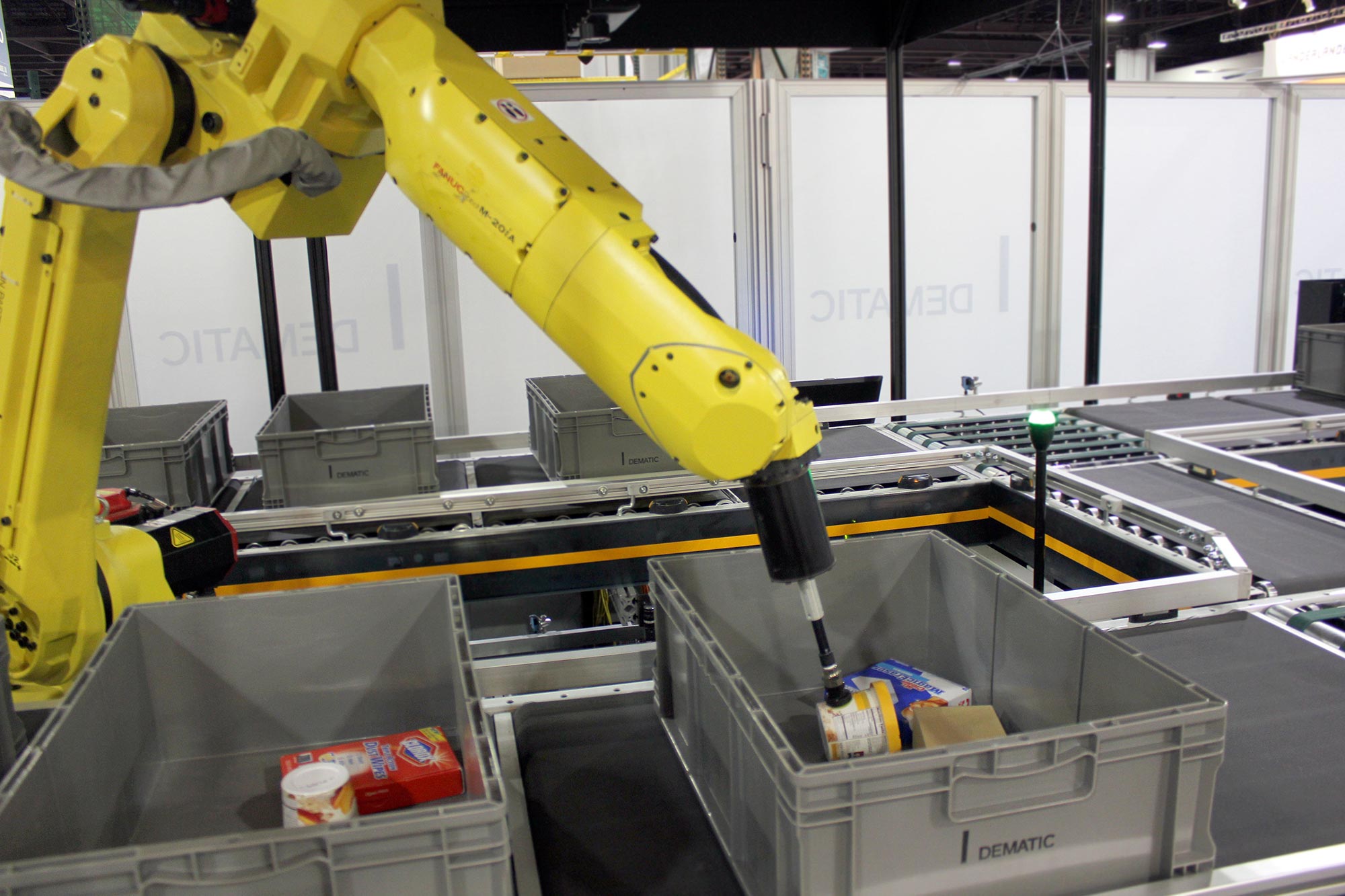
Above: Robotic Picking by Dematic
If you think about it, each SKU vendor will have no idea what a robot picking system needs as they would not be aware of what type of automation is being used in each DC’s respective fulfilment process. One good example is the level of complexity involved when a robot picks a small inner carton. Now a carton ought to be easier to pick than, say, a glass jar but nevertheless both will have a variety of physical properties that need to be defined and communicated to the robot doing the picking, such as drop height or even crushability on a scale of 1 to 10. These definitions in turn factor in to how the robot performs with each SKU.”
Pasquale continues, “And of course, in e-commerce there can be a near infinite variety of SKU shapes, dimensions, and weights, and other physical characteristics that are critical to the picking process. How these SKU properties are defined, for example at the point of the measurement process using a Cubiscan, is very important. Dematic have had a good experience working with the team at Diverseco to program the CubeMaster Software to include a variety of physical descriptions beyond the usual length, width, height and weight. These are then communicated to the Dematic robot picking system via the customer’s WMS, to allow successful picking to occur.”
More and more we see how SKU dimensions and characteristics affect logic in decisions at every stage of the automation process- at receiving, at put-away, at picking, and at dispatch. The more efficient the automation processes are at every step in the SKU journey, the greater the throughput capacity in the DC and the lower the cost per unit.
CubeMaster software from Diverseco Redefining SKU characteristics to achieve improved optimisation outcomes. In Australia, Distribution Centre automation experts are developing deep expertise in conceiving innovative software configuration possibilities within Diverseco’s famous CubeMaster WMS Integration software for Cubiscans. Logistics planners have worked closely with Diverseco’s software programmers to redefine SKU metrics and characteristics within CubeMaster in parallel with the advance in DC automation. The results have been impressive.
In other words, not only can an SKU be nestable, it can also be semi-nestable. But these are your definitions. And these characteristics or definitions directly affect better logic in decision making within the WMS or WCS.
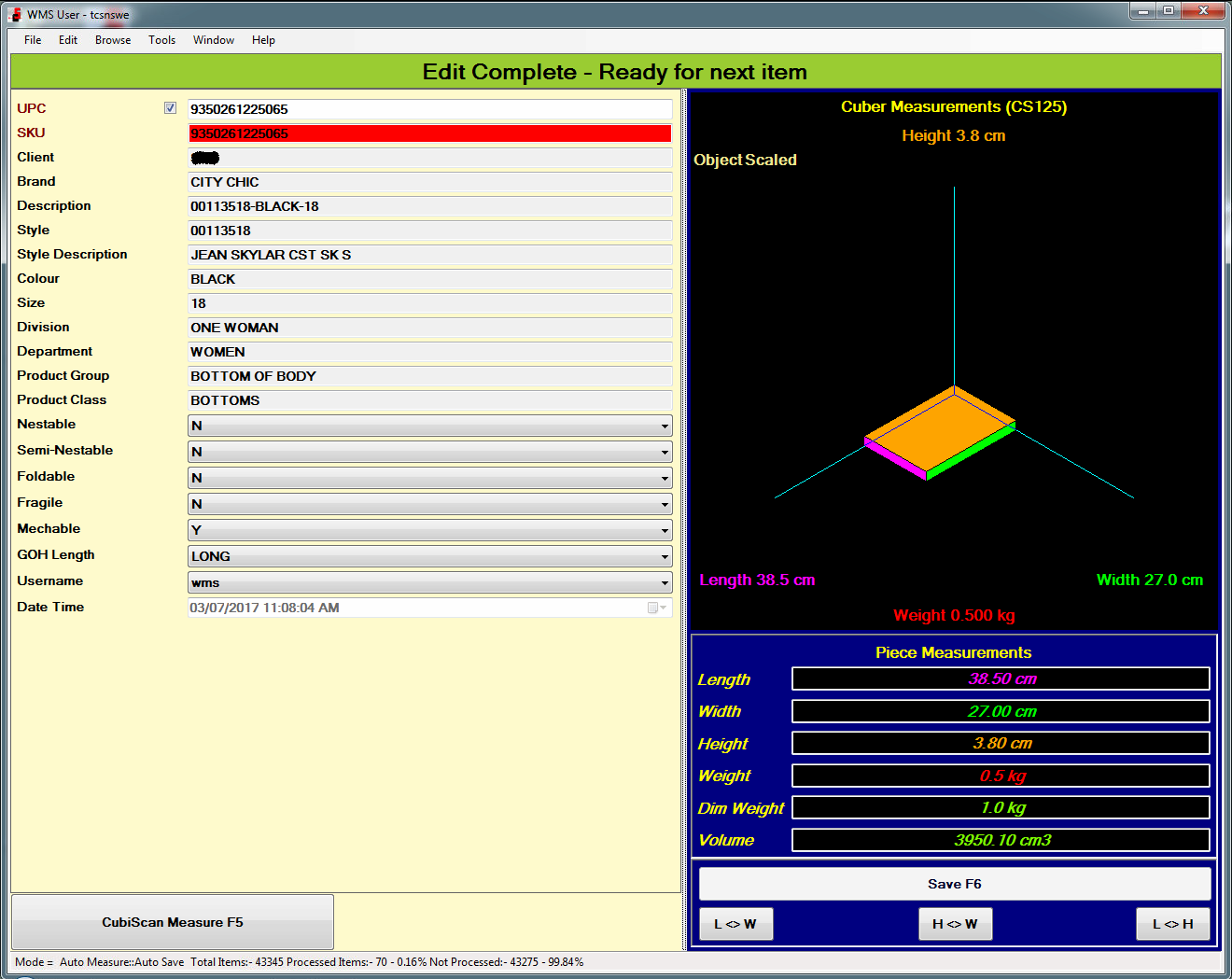
Above: Oh my GUI! The CubeMaster Screen Shot
The graphic user interface, or operator screen, above is what the Cubiscan 125 operator sees. Each of the rows represents a data field that can be customised by the user. CubeMaster is highly configurable and can include drop down menus with multiple selectable fields. All user-defined. What SKU definitions are important to you? These will in part be defined by the type of automation or optimisation you have in place – or are planing to invest in.
However, it’s one thing to create and collect data. Often that’s the easy part of the equation. It’s another thing to export this data in a manner that satisfies the needs of various interested stakeholders. Sometimes that’s the hard part. But have no fear! What the SKU data file format might look like behind the screen and how, when, and to where the file is exported is very flexible within CubeMaster.
Often as part of the sales process Diverseco and the potential buyer will hold one or more in depth discussions relating to software configuration, file formatting, and data export protocols. This can result in Diverseco creating a “draft” operator screen like in the above pic. This gives the potential buyer a graphic representation of the solution they are buying and enables various persons from IT, Strategy, Operations, Planning, and so on to have project buy-in. This key value-add is a critical part of the planning process. It means managers now have the chance to be very specific in their requirements and their definitions. This can translate into new dimensions in automation success (ha, a pun!).
To learn more about how CubeMaster and the Cubiscan 125 can help you supercharge your WMS please download the brochure or contact Diverseco today!

